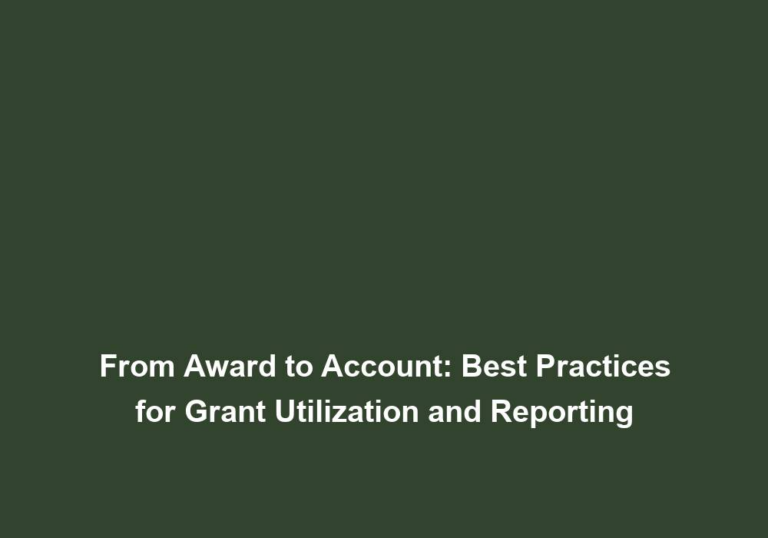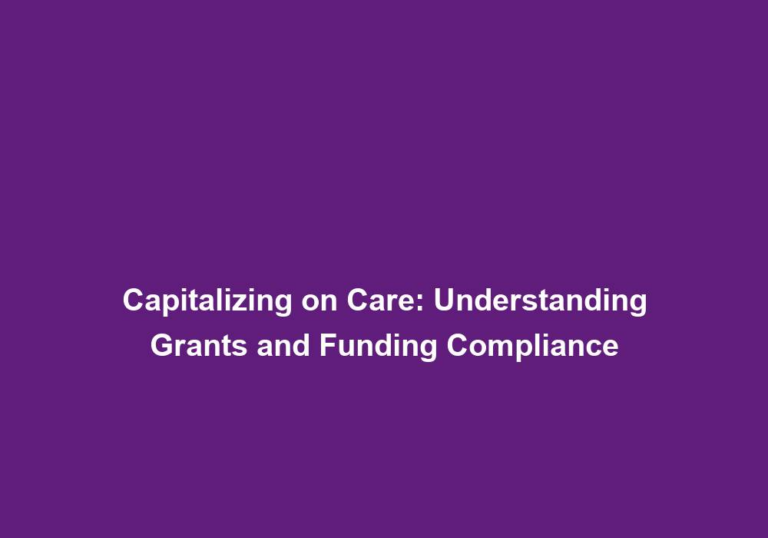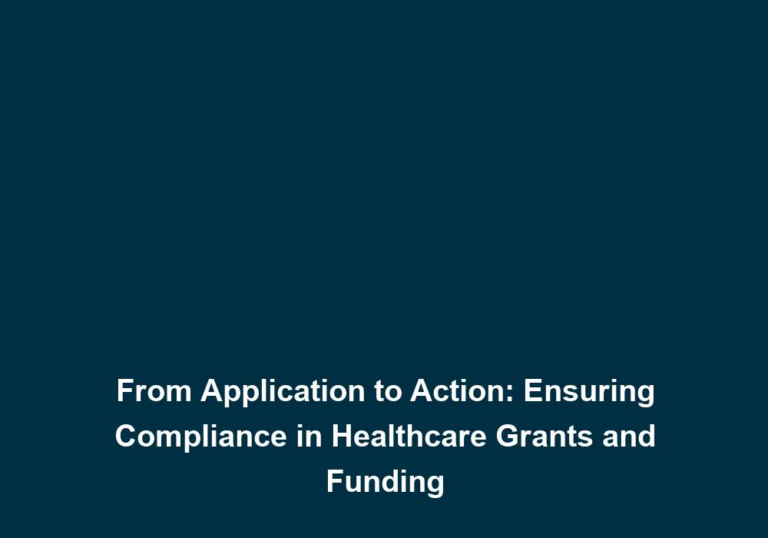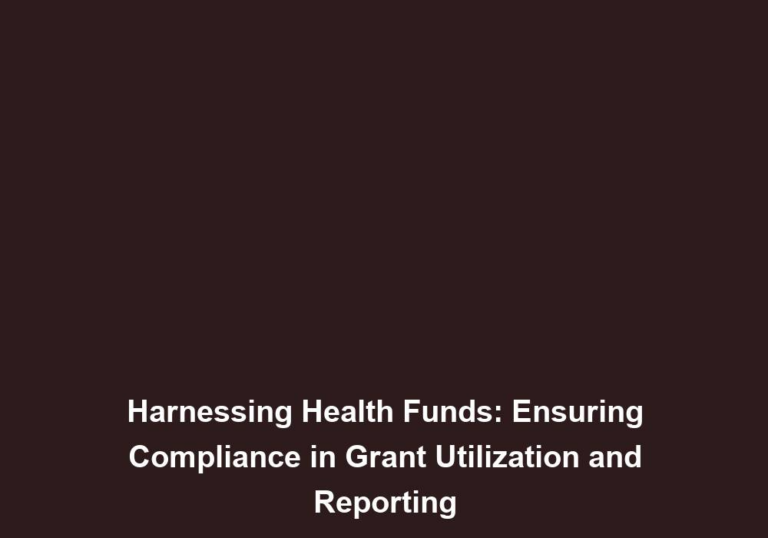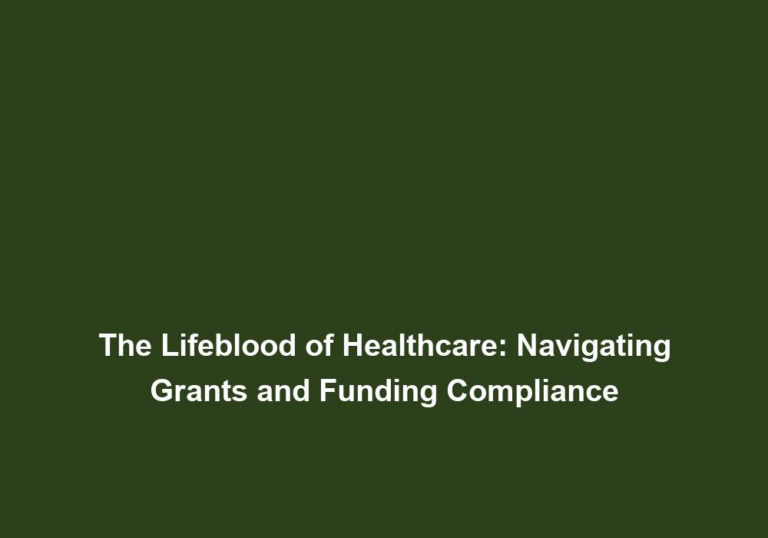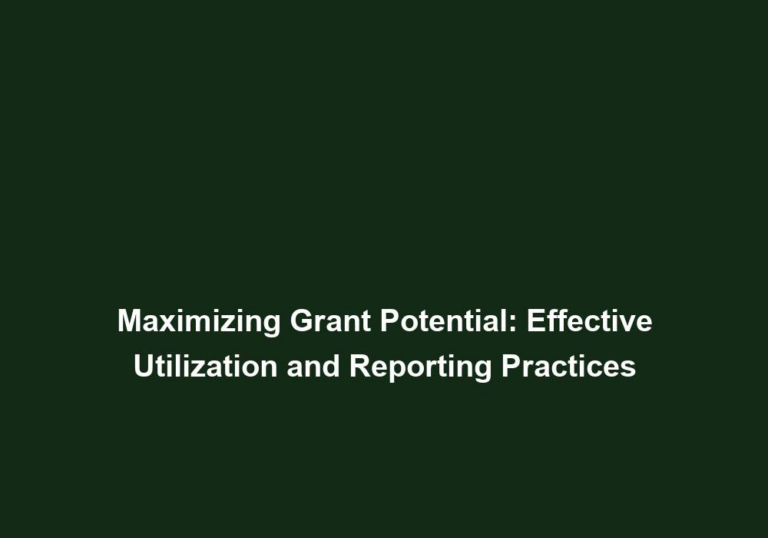Navigating the Grant Gauntlet: A Guide to Applying for Health Grants
Applying for health grants can be a daunting task, but with the right knowledge and preparation, you can increase your chances of securing funding for your healthcare-related projects. In this guide, we will walk you through the grant application process, providing valuable insights and tips to help you navigate the grant gauntlet successfully.
Introduction
Securing funding for healthcare projects through health grants can be a complex and overwhelming process. However, by understanding the key steps and best practices, you can enhance your chances of success. This comprehensive guide aims to assist you in effectively navigating the grant application process, ensuring that your healthcare initiatives receive the financial support they need.
Understanding Health Grants
Health grants serve as financial awards provided by various organizations, including government agencies, foundations, and healthcare institutions. These grants are specifically designed to fund projects that aim to improve healthcare services, advance medical research, and enhance public health initiatives. By securing a health grant, you can gain the necessary resources to support a wide range of healthcare-related programs, such as community health clinics, medical research studies, innovative treatments, and health education campaigns.
Identifying the Right Grant Opportunities
Identifying suitable grant opportunities is a critical first step before diving into the grant application process. To effectively identify the right grants for your specific needs and goals, consider implementing the following steps:
-
Research: Conduct thorough research to identify organizations that offer grants in your area of focus. Explore government websites, professional associations, and nonprofit organizations that support healthcare initiatives. This research will provide you with valuable insights into various grant opportunities available.
-
Read Guidelines: Once you have shortlisted potential grant opportunities, take the time to carefully read the guidelines provided by each funding organization. Pay close attention to the eligibility criteria, project requirements, and deadlines. Understanding these guidelines will ensure that your application aligns with the expectations of the funding organization.
-
Align with Your Mission: It is crucial to ensure that the grant aligns with your organization’s mission and goals. Applying for grants that support projects in line with your organization’s vision increases your chances of success. By choosing grants that resonate with your mission, you can present a compelling case for funding.
-
Assess Competition: Evaluate the level of competition for each grant opportunity. Some grants may receive a high volume of applications, making it more challenging to secure funding. On the other hand, other grants may have fewer applicants, increasing your chances of success. By assessing the competition, you can prioritize your efforts and focus on grants that offer a higher probability of success.
Crafting a Compelling Grant Proposal
Crafting a compelling grant proposal is crucial for securing funding for your healthcare project. To maximize your chances of success, consider incorporating the following key elements into your proposal:
-
Executive Summary: Begin your proposal with a concise and engaging executive summary that clearly outlines the purpose of your project, its significance, and the expected outcomes. The executive summary should serve as a compelling introduction that captures the reader’s attention and encourages them to continue reading.
-
Problem Statement: Clearly define the problem your project aims to address. Provide relevant statistics, data, and evidence to support the need for your proposed intervention. This section should demonstrate a clear understanding of the healthcare issue and its impact on the community. By effectively conveying the problem, you can establish the urgency and importance of your project.
-
Goals and Objectives: Clearly state the goals and objectives of your project. Ensure that they are specific, measurable, achievable, relevant, and time-bound (SMART). Outline the expected outcomes and the impact your project will have on improving healthcare services or addressing the identified problem. By setting clear goals and objectives, you demonstrate a well-structured and focused approach to your project.
-
Methods and Approach: Describe the methods and approach you will use to achieve your project’s goals. Provide a detailed plan, including timelines, resources required, and the steps you will take to measure and evaluate the project’s success. By providing a comprehensive and well-thought-out plan, you showcase your project’s feasibility and demonstrate your ability to execute it successfully.
-
Budget: Develop a comprehensive and realistic budget for your project. Include all necessary expenses, such as personnel costs, equipment, supplies, and any other relevant costs. Ensure that the budget aligns with the grant’s funding limitations and guidelines. By presenting a well-structured and accurate budget, you demonstrate financial responsibility and transparency.
-
Evaluation and Sustainability: Explain how you will evaluate the project’s success and measure its impact. Additionally, discuss the sustainability of your project beyond the grant period. Granting organizations often look for projects that have the potential to create long-term positive change. By outlining a robust evaluation plan and addressing the project’s sustainability, you showcase your project’s long-term viability and impact.
Submitting Your Grant Application
Once you have prepared a compelling grant proposal, it’s crucial to ensure a successful submission. Consider the following tips to enhance your chances of securing funding:
-
Review and Proofread: Thoroughly review your grant application, checking for any grammatical errors or inconsistencies. Proofread the document multiple times to ensure it is error-free and professionally presented. A well-polished application reflects your attention to detail and professionalism.
-
Follow Guidelines: Double-check that you have followed all the guidelines provided by the funding organization. Ensure that you have included all the required supporting documents and attachments. By adhering to the guidelines, you demonstrate your ability to follow instructions and meet the organization’s expectations.
-
Submit on Time: Be mindful of the grant application deadline and submit your application well in advance. Late submissions are often disqualified. By submitting your application on time, you exhibit your commitment and dedication to the project.
-
Seek Feedback: If possible, seek feedback on your grant proposal from trusted individuals, such as colleagues or mentors. Their input can provide valuable insights and help you refine your application, improving your chances of success. By seeking feedback, you demonstrate your openness to constructive criticism and your commitment to continuous improvement.
Conclusion
Navigating the grant gauntlet may initially seem intimidating, but with careful planning, thorough research, and a well-crafted proposal, you can significantly increase your chances of securing health grants. Remember to align your project with the grant’s objectives, clearly communicate your goals and methods, and submit a polished application on time. Health grants provide invaluable financial support for healthcare initiatives, enabling you to make a positive impact on the health and well-being of your community. Good luck with your grant applications!


